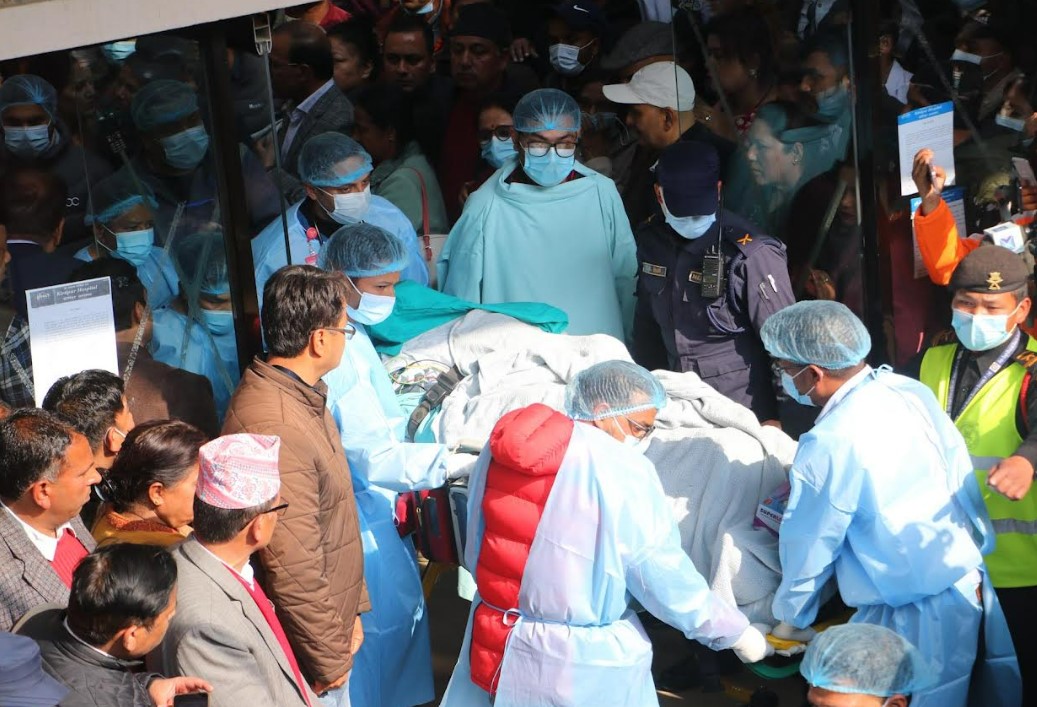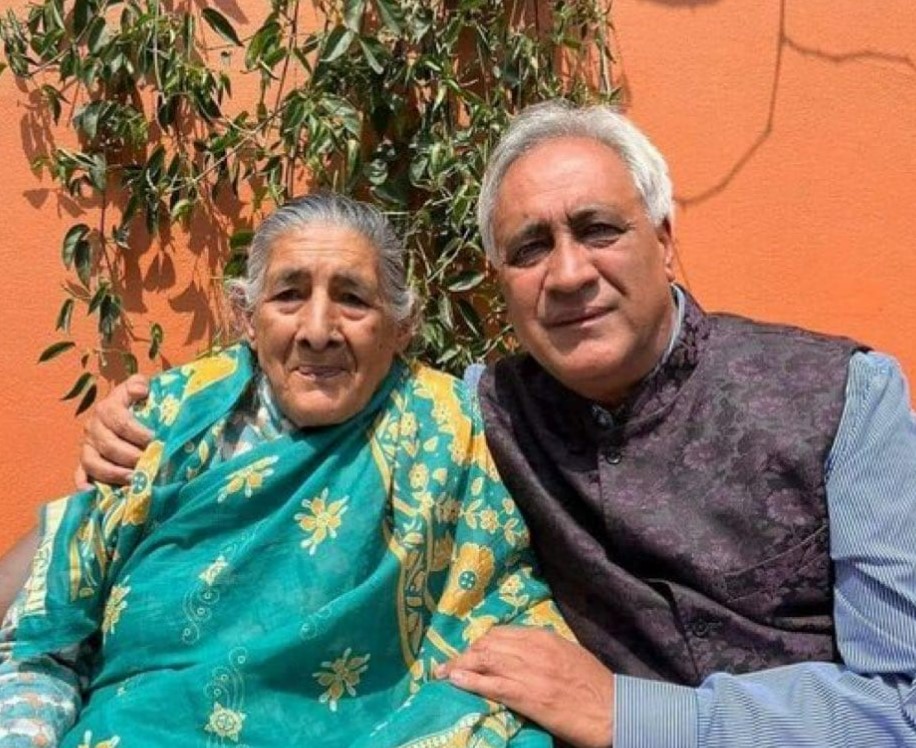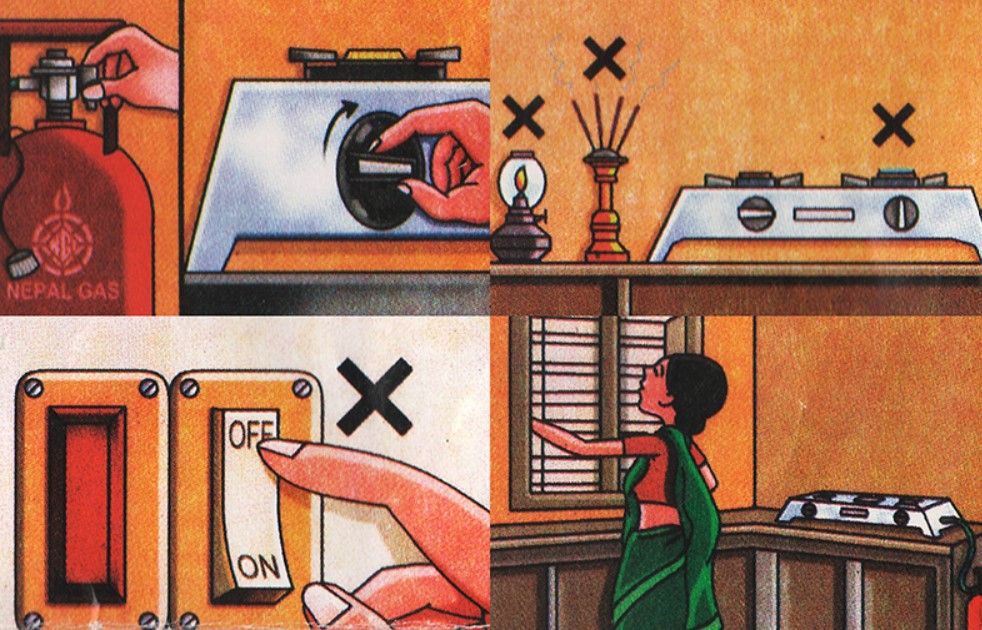Life & Health

In a rare medical airlift, Nepali Congress lawmaker Chandra Bhandari, who suffered serious burn injuries in his kitchen on Wednesday night, has been flown to Mumbai, India, on a chartered flight for medical treatment.
It illustrates a crippling lack of advanced burn care facilities in Nepal where cases of serious burn injuries are growing.
The Gulmi-1 lawmakers in the House of Representatives, Bhandari, and his 86-year-old mother, Harikala, suffered burn injuries after the leaking Liquefied Gas cylinder caught fire and exploded at their Buddhangar residence.
Kathmandu Police Circle Spokesperson Sitaram Rijal said the cylinder caught fire and exploded as soon as Bhandari entered the kitchen, switched on the light and proceeded to turn the gas regulator off. He’d done so after his mother complained of the gas leak.
Harikala, who suffered 80 per cent burn injuries on her body, died at 10:57am while receiving treatment at the Kirtipur Burn Hospital.
Bhandari has suffered 30 per cent burn injuries that have affected his hands, limbs and respiratory organs, according to doctors.
On their advice, he was airlifted to Mumbai on a chartered flight operated by Shree Airlines. He was accompanied by a team of doctors and paramedics.

In Mumbai, he will receive advanced medical care at the National Burn Centre, which is considered the best medical facility in India for burn care.
LP gas fire explosions and even poisoning are common in Nepal, where more and more people are beginning to use it for cooking and heating. But due to poor handling of gas stoves and regulators by the users and distributors, accidents have become common.
Fire safety experts the world over warn against touching or using telephone, electric switches, appliances or even mobile phones in the event of gas leak.
Chief of Juddha Fire Brigade, Kathmandu, Prakash Pandit told NepalMinute.com that the latest fire should drive home at least two lessons.
“First, it shows that we have to have fire extinguishers in our kitchens so that fire can be doused soon after it starts,” he said. “Second, we suspect that the cylinder exploded because it was already very old or had expired.”
Another explosion
As MP Bhandari struggled to recover from burn injuries, a report from Dang in western Nepal said two people have been injured in a LP gas fire on Thursday morning. Kusum KC, 50, and Aashish Khanal, 29, are receiving treatment in the nearby hospital, according to the police.
Also Read: Think twice before turning on your gas heater or geyser
Nepal Oil Corporation, which imports gas into the country, appears to have done little to raise gas safety awareness. It's official website doesn't have any educational material on that. But a leading gas distributor Nepal Gas Limited has given clear instructions on the Dos and Don'ts during gas leak (See image below).

According to the World Health Organization, burns are the second most common injury in rural Nepal, accounting for five per cent of disabilities.
Ujjwal Bikram Thapa, a social activist helping people affected by burns, notes that “most burn cases are reported during winter”. “That’s when we get the most calls asking for help,” he told NepalMinute.com recently.
People suffer from burns while sitting near a fire, or while cooking. Nylon, fleece, silk, polyester and fabric clothes are highly combustible. People also get burnt with hot water.
The UN health body, WHO, explains thermal (heat) burns occur when some or all of the cells in the skin or other tissues are destroyed by hot liquids (scalds), hot solids (contact burns), or flames (flame burns).
Low-income, lack of electric stoves in homes, ignorance, lack of trained human resources, difficult geographical location and a lack of medical facilities are some of the causes of the deaths resulting from burns, says activist Thapa.
To avoid disasters, experts suggest switching to electric- or solar-powered stoves, heaters and water heaters. Only when that’s not possible should gas-powered amenities be used, but with enough caution, they say.
How to handle gas leaks?
Extinguish all naked flames
Avoid using the telephone or operate any electrical switches and appliances
Open all windows and doors wide to disperse the gas
Stop the gas flow immediately by turning off the emergency control valve upstream of the gas meter (the main switch of the gas meter) if possible
For LPG cylinders, you should disconnect the regulator of the LPG cylinder to cut off the gas supply.
Leave the premises at once and notify your neighbours by knocking on their doors for immediate evacuation when the gas leak is serious or when the situation is uncertain
Leave the building by the stairs. -Source: www.emsd.gov.hk
In Nepal, Dial 101 to call fire brigade, and 102 to call ambulance.
How to safely handle LP gas heaters and geysers?
Do not install gas geyser in a closed space
Open the ventilators when you are using gas geysers or heaters
Keep the exhaust fan switched on if you have it in bathroom, rooms
Check the geyser regularly for any leaks
Do not keep the geyser running. Keep a gap every time you use it
Check for gas leaks
Make sure that you can access the gas cylinder valve easily in gas heaters
Make sure the regulator points to the rear of the heater -Source: WHO
How to avoid burns?
If you are sitting near a fire, always face yourself towards the fire
Whichever part gets burned, keep that part in running water for at least 20 minutes in the wound.
As it stops burning take the patient to the nearest hospital
Give liquid to the victim as dehydration causes renal failure in the victims
Fleece is the worst in fire. Anything that is nylon must be avoided
Wear cotton clothes
Take care of children
Do not burn firewood, coals in confined spaces. Open ventilators/ windows
Take precautions while open burning of garbage. -Source: WHO

_11zon1681280198.jpg)




